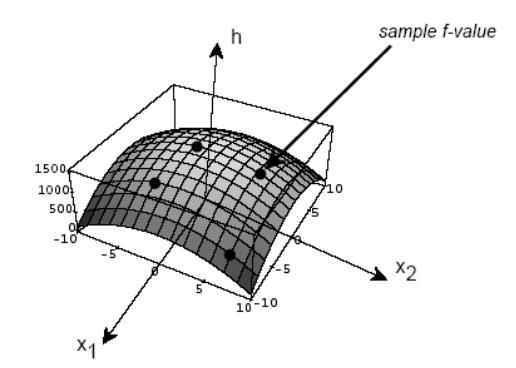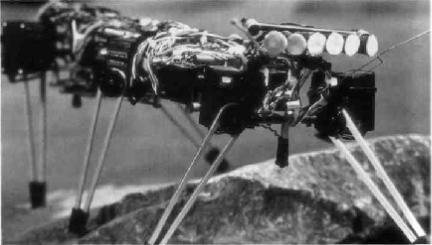
u_course
.pdf71
word, the only possible segmentation solution is ‘d’. The dynamic usage of context eliminates all impossible combinations from the solution set, enabling the evaluation of results ‘on the fly’ during the recognition process. Dynamic context, therefore, provides the highest possible recognition accuracy, because it eliminates the impossible results in real time, during the recognition process.
Intelligent Recognition technology often recognizes text that is considered to be of poor quality or even completely unacceptable for OCR and ICR technologies, therefore further improving the recognition rates when compared to other systems. Working with high quality machine print, OCR provides recognition accuracy of nearly 100 percent (99.9 %), a level of accuracy acceptable for many forms processing applications. ICR cannot guarantee the same levels of accuracy that OCR systems deliver on machine print due to the inherent problems of reading handprint spacing variations, diversity of human writing styles, etc. Instead, state of the art ICR systems provide the same recognition accuracy for a certain part of the data stream, while the data that cannot be reliably read continue to be sent for visual verification. The following mechanism is used by ICRs to ensure the accuracy required by the application. The stream of images is divided into two parts: those that were recognized reliably with a required accuracy (accepted), and those for which the system does not guarantee the required accuracy (rejected).
Intelligent Recognition further improves recognition rates and accuracy when compared to traditional machine print (OCR) and handprint (ICR) engines through field recognition and cross-validation of results.
Intelligent Recognition recognizes a field not a character, and consequently a whole field is either accepted or rejected. Conversely, in the case of a rejected field Intelligent Recognition technology additionally provides information about unreliable characters. Second, the reject mechanism is tuned so thoroughly that it allows accuracy up to 0.1% for the texts of low quality.
Computing power alone is not able to deliver high recognition results without a human-like recognition approach. Intelligent Recognition employs the most advanced methods of single character recognition while using sophisticated algorithms to cross-validate results during the recognition process.
Intelligent Recognition advances the state of recognition technology, exploiting the strengths and capabilities of its predecessors – OCR and ICR systems, while eliminating their inherent limitations. Intelligent Recognition technology delivers highly accurate machine print, handprint and cursive
72
recognition results, helps eliminate laborious human data entry and has become a proven solution for a broad range of the most demanding applications for government posts, commercial mailers, banks, financial institutions and data processing centers.
3. POST-READING ASSIGNMENT
3.1. Match the terms in Table A with the statements in Table B:
Table A |
Table B |
1. recognition |
a) having more than one meaning, so that it is not |
|
clear which is intended |
2. illegible |
b) very cleverly designed and very advanced, |
|
working in a complicated way |
3. sloppy |
c) the ability to do something in an exact way |
|
without making a mistake |
4. ambiguous |
d) difficult or impossible to read |
5. accuracy |
e) not done carefully or thoroughly |
6. sophisticated |
f) the ability of a computer to recognize voices, |
|
shapes etc |
|
|
3.2.Find key words and sentences in each paragraph of the text.
3.3.Summarize the text using these key words and sentences.
4. LANGUAGE IN USE
4.1. Find where the Passive Voice is used in the text.
Unit 2
1. PRE-READING ASSIGNMENT
1.1. Translate the vocabulary used in the text below:
|
73 |
a priori |
match |
approximately |
to partition |
curve fitting |
plane |
to derive |
to regard |
entity |
to sanction |
genuine |
solid |
good guess |
supervised learning |
inductive |
unsupervised learning |
to involve |
taxonomic problems |
the latter |
training set. |
2. READING |
|
2.1.Look through the text and say:
●What is the difference between supervised and unsupervised learning?
●Why do neural networks need learning?
Types of Learning
Imagine that there is a function f and the task of the learner is to guess what it is. Our hypothesis about the function to be learned is denoted by h. Both f and h are functions of a vector valued input X(x1 , x2, …., xn) which has n components. We think of h as being implemented by a device that has X as input and h(X) as output. Both f and h themselves may be vector valued. We assume a priori that the hypothesized function h is selected from a class of functions H. Sometimes we know that f also belongs to this class or to a subset of this class. We select h based on a training set E of m input vector examples. Many important details depend on the nature of the assumptions made about all of these entities.
There are two major settings in which we wish to learn a function. In one called supervised learning, we know (sometimes only approximately) the values of f for the m samples in the training set E. We assume that if we can find a hypothesis h that closely agrees with f for the members of E then this hypothesis will be a good guess for f especially if E is large.

74
Curve fitting is a simple example of supervised learning of a function. Suppose we are given the values of a two-dimensional function f at the four sample points shown by the solid circles in Fig 12.
Fig.12
We want to fit these four points with a function h drawn from the set H of second degree functions. We show there a two dimensional parabolic surface above the x plane that fits the points. This parabolic function h is our hypothesis about the function f that produced the four samples. In this case h = f at the four samples but we need not have required exact matches.
In the other setting, termed unsupervised learning, we simply have a training set of vectors without function values for them. The problem in this case, typically, is to partition the training set into subsets E1, E2,..., En, in some appropriate way. We can still regard the problem as one of learning a function (the value of the function is the name of the subset to which an input vector belongs). Unsupervised learning methods have application in taxonomic problems in which it is desired to invent ways to classify data into meaningful categories.
We shall also describe methods that are intermediate between supervised and unsupervised learning.

75
We might either be trying to find a new function h or to modify an existing one. An interesting special case is that of changing an existing function into an equivalent one that is computationally more efficient. This type of learning is sometimes called speed-up learning. A very simple example of speed-up learning involves deduction processes. From the formulas A ≤ B and B ≤ C we can deduce C if we are given A. From this deductive process, we can create the formula A ≤ C, a new formula but one that does not sanction any more conclusions than those that could be derived from the formulas that we previously had. But with this new formula we can derive C more quickly, given A, than we could have done before. We can contrast speed-up learning with methods that create genuinely new functions – ones that might give different results after learning than they did before. We say that the latter methods involve inductive learning. As opposed to deduction, there are no correct inductions – only useful ones.
3. POST-READING ASSIGNMENT
3.1.Mark the following statements as True or False:
A.The solid circles in Fig.1 show where the parabolic function intersects another second-degree function.
B.We select a type of hypothesis based on a training set.
C.In supervised learning, we need to keep training sets as small as possible in order not to make the teacher too tired.
D.Using the deductive process we can create new formulas that contain only the information we had in previous ones.
4. GRAMMAR IN USE
4.1. Find where the Passive Voice is used in the text.
5. SPEAKING
5.1. Role play and follow the teacher’s instructions.
Unit 3
1. PRE-READING ASSIGNMENT

76
1.1 Is it possible to computerize the knowledge of a medical diagnostician, a computer repair person, or a teacher?
2. READING
2.1.Look through the text and say:
●What are the main parts of any expert system?
●What is the basis of AI researchers’ work?
Expert Systems
Expert Systems are an area of AI that explores how to computerize the expertise of a human expert.
Computerized versions of the same general ideas are called expert systems. An expert system typically consists of four major components:
1.Knowledge Base. This is the knowledge in the expert system, coded in a form that the expert system can use. It is developed by some combination of humans (for example, a knowledge engineer) and an automated learning system (for example, one that can learn through the analysis of good examples of an expert’s performance).
2.Problem Solver. This is a combination of algorithms and heuristics designed to use the Knowledge Base in an attempt to solve problems in a particular field.

77
3.Communicator. This is designed to facilitate appropriate interaction both with the developers of the expert system and the users of the expert system.
4.Explanation and Help. This is designed to provide help to the user and to provide detailed explanations of the “what and why” of the expert systems activities as it works to solve a problem.
Researchers in AI often base their work on a careful study of how humans solve problems and on human intelligence. In the process of attempting to develop effective AI systems, they learn about human capabilities and limitations. One of the interesting things to come out of work on expert systems is that within an area of narrow specialization, a human expert may be using only a few hundred to a few thousand rules.
Another finding is that typically takes a human many years of study and practice to learn such a set of rules and to use them well. The set of rules is a procedure that involves both algorithmic and heuristic components. In certain cases the set of rules can be fully computerized or nearly fully computerized, and can produce results both very quickly and that may well be more accurate (on average) than highly qualified human experts.
3. POST-READING ASSIGNMENT
3.1.Mark the following statements as True or False:
A.Expert systems form a part of AI.
B.The communicator facilitates interaction with the developers of an expert system and its users.
C.Researchers in AI study human capabilities and limitations.
D.The set of rules is a procedure that involves only heuristic components.
4. LANGUAGE IN USE
4.1. Find the infinitives in the text.
5. WRITING
Write an annotation to the text “Expert Systems” (See Appendix).
6. LISTENING

78
6.1.You are going to hear a conversation in which David, a graduate student doing research in the field of artificial intelligence, explains to a friend, Kevin, what AI and expert systems are. Before you listen, try to write short definitions to explain:
1.artificial intelligence
2.expert systems
6.2.Now listen to the conversation and modify your definitions as necessary.
6.3.Listen again to the recording and answer these questions:
1.Does visual perception require intelligence when done by humans?
2.What two categories of task are mentioned in relation to AI programs?
3.Which category of task is Ai more successful at?
4.What is the relationship between AI and expert systems?
5.What examples of existing expert systems are mentioned?
6.In what way do expert systems imitate human experts?
7.Why does the Japanese system have two parallel inference engines?
8.What is the function of inference trees?
6.4.Read this adapted extract from the tapescript and fill in the gaps with the missing words:
KEVIN: What are 1e _______2 s ______ used for?
DAVID: They're built for commercial 3a _____ Up to now they've been used for a variety of tasks - medical 4 d ____ , electronic fault finding machine translation,
79
and so on. But the point about them is that you can 5 i _____ them about how they came to a particular 6 c ________________ ____
KEVIN: So, in that respect, they imitate human experts.
DAVID: Yes. I read recently about a Japanese system that can be used by 7 1______
to draw conclusions about new legal cases. It refers to D 8 ______ of statutory laws and legal precedents and is able to see similarities in the 9r ____. processes used to decide each case - exactly as a 10 s____________ lawyer would. KEVIN: How can it do that?
DAVID: The system has two reasoning mechanisms, known as 11 i ______ 12 e
______, which work in 13 p _____ One operates on the written laws, the other operates on the legal precedents. They draw all the possible conclusions and then output them in the form of 14 i _______ 15 t________.
6.5. Now listen again to the recording and check your answers.
7. SPEAKING
Prepare a report on the topic “Application of the Systems of Artificial Intelligence” (See Supplement 7) and present it to the rest of the class.

80
ИНФОРМАЦИОННО-СПРАВОЧНЫЕ МАТЕРИАЛЫ
Приложение 1
Оставление резюме, CV
Составление удачного резюме на английском языке часто является одной из самых сложных задач при поиске работы за границей или в западной компании. Резюме должно отвечать всем необходимым требованиям, но при этом выгодно отличать вас от других претендентов на данную должность. Вам придется подвести итог своему жизненному опыту на 1-2 страницах, осветив при этом свои наиболее выдающиеся достижения. Обычно, работодатель не читает полностью каждое резюме, поэтому необходимо сразу заинтересовать его самой важной информацией.
В США резюме принято называть Resume, в Европе - CV (Curriculum
Vitae |
|
|
|
|
|
|
|
|
|
|
|
|
|
|
|
|
|
|
|
). |
|
|
|
|
|
|
|
|
|
|
|
Стандартная форма резюме европейского уровня включает в себя 7 основных частей:
1.Личная информация (Personal Information)
2.Цель (Objective)
3.Образование (Education)
4.Опыт работы (Work Experience)
5.Специальные навыки (Additional Skills)
6.Хобби/интересы (Hobbies and interests)
7.Рекомендации (References)
Основные моменты, которые должны быть учтены при составлении резюме:
1.Резюме следует начать с личной информации. Напишите полностью свое имя, укажите адрес, телефон, электронный адрес.
2.Следующим пунктом является цель вашего устройства на данную должность. В нескольких словах опишите работу, которой вы хотите заняться и причины, по которым вы считаете свою кандидатуру подходящей для нее. Представьте ваши самые важные достижения в данной области. Рекламируя себя с наилучшей стороны, показывая, в чем именно вы преуспели, вы будете выгодно отличаться от других
